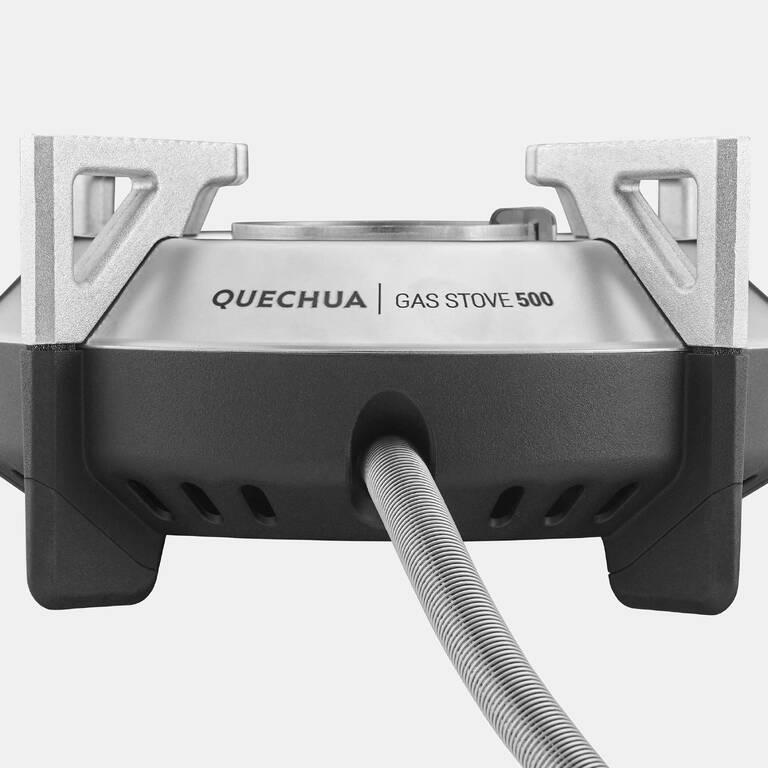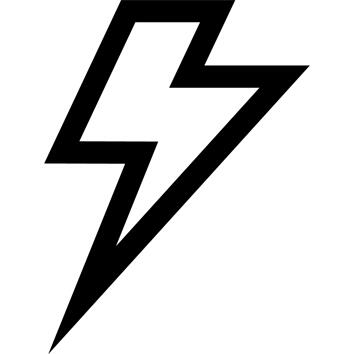Safety
This stove meets standard EN521.
It must be used only with butane/propane cartridges compliant with standard EN417.
Decathlon’s cartridges (100 g, 230 g, 450 g) are compliant with Standard EN 417 and are compatible with this Quechua 500 stove.
Read the instructions and precautions for use attached to the stove.
Setting up the stove and connecting a gas cartridge:
To set up a gas cartridge, always do so in a ventilated place, preferably outdoors and never near a flame, heat source, spark, individuals or flammable materials.
Check that your stove's gas inlet is properly closed and check the location and condition of the leakproof seal.
Make sure that the cartridge is on a stable flat surface. Do not shake.
Setting up the stove and connecting a gas cartridge (continued):
Hold the device and screw in the cartridge by hand by turning it clockwise until it stops, being careful not to damage the screw thread.
Follow the same instructions to take off the cartridge.
It can be dangerous to use cartridges other than those of the Decathlon brand .
It's normal to hear a small fizzing sound (escaping gas) for less than 2 seconds when connecting the cartridge to the stove.
Weight and dimensions
Stove weight: 650g
Dimensions of the stove when folded: L 20cm x W 17cm x H 9 cm
Hose length when unfolded: 30cm
Carry case weight: 270g
Case dimensions: L 20.5cm x W 20.5cm x H 10cm
Weights, volumes & dimensions may vary slightly due to production tolerances.
Ease of use
Pan stand on 4 legs, perfectly adapted for any pan over 10 cm in diameter and with a maximum weight of 8 kg.
30 cm long flexible metal hose allowing the canister and stove to be remotely positioned.
Simple ignition thanks to the piezo button located near the gas flow adjustment knob. All operations (ignition, adjustments) are carried out away from the fire.
The non-slip feet ensure good stability on all flat surfaces.
Installation and use.
Place the stove on a flat, unobstructed surface. Release the controller stored under the stove and screw the end of the cable onto the cartridge and connected this way position it at a distance from the stove. Open the flow adjustment valve, activate the piezo (several times if necessary). Your stove is lit.
The flow adjustment knob enables fine adjustment of the power of the stove, so that you can heat something up quickly or simmer it for a longer period.
Safety during use
Do not use your stove in an enclosed space.
Always cook under adult supervision and paying attention to any children nearby.
Do not tilt the cartridge when the stove is in operation as it could create big flames.
Easy to store and transport
Once cooking is complete, allow your stove to cool. Unscrew the cartridge and put the controller back in its housing under the stove, passing the hose over the burner (the elastic metal sheath protects against residual heat).
Rotate the latch to hold the controller and protect the tip.
Store the product in its case for transportation or insert it directly into a Quechua 100 or 500 4P camping pot.
A carry case but so much more ...
To maximize its use, the carry case is suitable for food contact, so at mealtimes it can be used as a salad bowl and serving plate and, after your meals, into a carry case for your food. (N.B. it is not completely watertight for liquids).
Heating time
Our internal tests give us values that reflect the actual conditions of use. We have tested our stoves with the 500 4P stainless steel camping pots, filled with one litre of water.
Score: boiling time for 1 L of water: 4 mins with a full cartridge. Actual power: 1763 watts. Actual consumption: 127 g/hour.
The results and performance of different stoves must be analysed in a comparable way (same conditions and parameters).
Heating time (continued)
The heating time of a stove is subject to a mandatory standardised process for EU certification but does not necessarily reflect the actual conditions of use.
EN521 standard parameters (heat output):
Propane gas at 3 bar pressure, without container.
Results: 3.47kW / 248g/h.
Performance and consumption
Many parameters affect the capacity and performance of your stove: atmospheric pressure, wind and humidity therefore possibly altering the boiling temperature, the heating time and the number of litres heated per cartridge.
The performance of a stove is therefore assessed according to the gas consumed / heating speed.

































